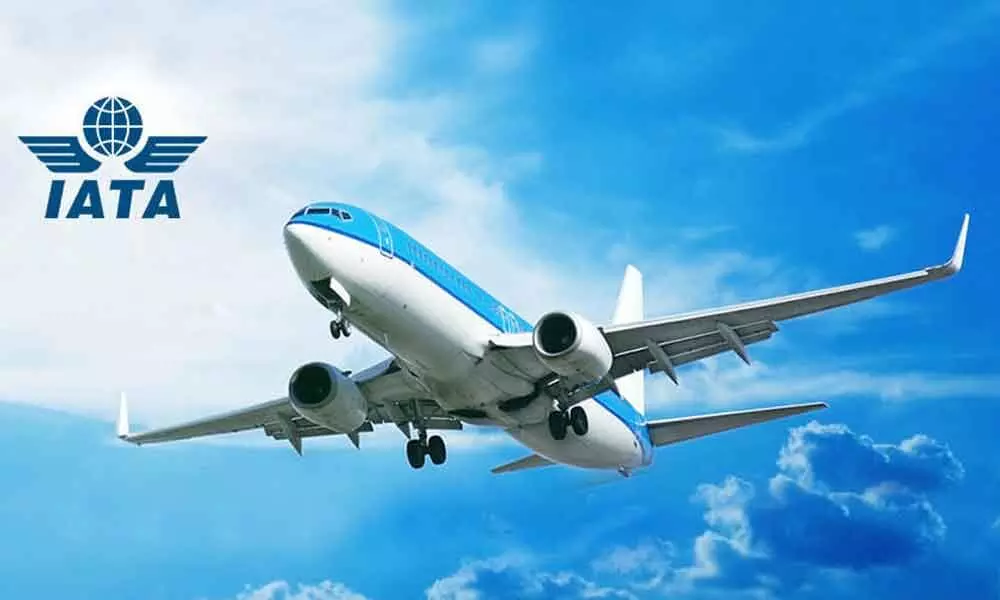Global airline industry expected to cut losses in 2022
Net industry losses are expected to reduce to $11.6 bn in 2022 after a $51.8 bn loss in 2021
image for illustrative purpose

The International Air Transport Association (IATA) announced its latest outlook for airline industry financial performance showing improved results amid the continuing Covid-19 crisis:
Net industry losses are expected to reduce to $11.6 billion in 2022 after a $51.8 billion loss in 2021 (worsened from the $47.7 billion loss estimated in April). Net 2020 loss estimates have been revised to $137.7 billion (from $126.4 billion). Adding these up, total industry losses in 2020-2022 are expected to reach $201 billion.
Total passenger numbers are expected to reach 2.3 billion in 2021. This will grow to 3.4 billion in 2022 which is similar to 2014 levels and significantly below the 4.5 billion travellers of 2019. Robust demand for air cargo is expected to continue with 2021 demand at 7.9 per cent above 2019 levels, growing to 13.2 per cent above 2019 levels for 2022.
"The magnitude of the Covid-19 crisis for airlines is enormous. The $137.7 billion loss of 2020 will reduce to $52 billion this year. And that will further reduce to $12 billion in 2022. We are well past the deepest point of the crisis. While serious issues remain, the path to recovery is coming into view. Aviation is demonstrating its resilience yet again," said Willie Walsh, IATA's Director General.
The air cargo business is performing well, and domestic travel will near pre-crisis levels in 2022. The challenge is international markets which remain severely depressed as government-imposed restrictions continue.
"People have not lost their desire to travel as we see in solid domestic market resilience. But they are being held back from international travel by restrictions, uncertainty and complexity. More governments are seeing vaccinations as a way out of this crisis. We fully agree that vaccinated people should not have their freedom of movement limited in any way. In fact, the freedom to travel is a good incentive for more people to be vaccinated. Governments must work together and do everything in their power to ensure that vaccines are available to anybody who wants them," said Walsh.
Re-establishing global connectivity, the 11.3 million jobs (pre-Covid-19) in the aviation industry, and the $3.5 trillion of GDP associated with travel and tourism should be priorities for governments.
"Aviation is resilient and resourceful, but the scale of this crisis needs solutions that only governments can provide. Financial support was a lifeline for many airlines during the crisis. Much of that - approximately $110 billion - is in the form of support that needs to be paid back. Combined with commercial borrowing the industry is now highly leveraged. We don't want handouts, but wage support measures to retain critical skills may be necessary for some airlines until governments enable international travel at scale. And regulatory alleviations-like continued slot wavers while international traffic recovers - will be needed well into 2022," said Walsh.
North American carriers are expected to outperform other regions on the back of fast recovery of the US domestic market. The opening of the US market to vaccinated travellers from November 2021 will progress the recovery to international markets. The US industry started to turn cash-positive in the second quarter of 2021 and will be the only region in positive financial territory in 2022 with an expected $9.9 billion profit.
European carriers will see their losses cut from $20.9 billion in 2021 to $9.2 billion in 2022. Shifting rules and confused application of EC recommendations across Europe compromised the expected positive impact of rising vaccination rates and establishment of the European Digital Covid certificate. Better coordination between governments is expected to see a broader opening of international markets in the months ahead, boosted significantly by the re-establishment of transatlantic travel for vaccinated travellers.
Long-haul demand, however, will significantly lag behind the recovery in intra-European travel.
Asia-Pacific carriers are expected to see losses diminish from $11.2 billion in 2021 to $2.4 billion in 2022. The region continues to suffer some of the most draconian travel restrictions. While there has been some alleviation in restrictions, significant improvements in international markets are not expected until later in 2022. Reduced losses are expected to be achieved on the back of large and largely open domestic markets, not least of which is China. The region's carriers are also benefitting disproportionally from the strength of air cargo markets in which they are dominant.
Middle Eastern carriers will see very limited improvement in their financial performance from a $6.8 billion loss in 2021 to a $4.6 billion loss in 2022. Without large domestic markets, the region's major carriers rely significantly on connecting traffic, especially to Asia-Pacific which has been slow to re-open to international traffic.

